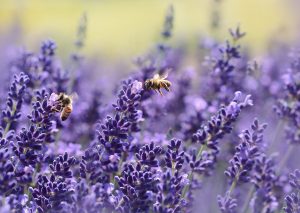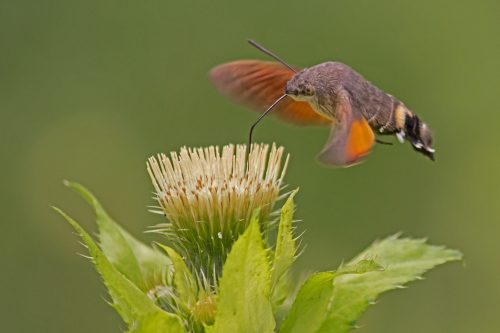Humans love sugar. It’s delicious and energizing, and our bodies use it for a variety of activities. In an interspecies competition for the biggest sweet tooth, however, we’re losing big time to nectarivores, a group of animals that expend huge amounts of energy flying, hovering, and sucking the sugar-rich nectar out of plants. In a new study released in Science in February 2017, researchers found that these species need sugar to power an ancient pathway that produces antioxidants and enables their active lifestyles.

Nectarivores, such as hummingbirds, bees, butterflies and hawk moths, are unique due to both their taxing aerobic lifestyle and their high-sugar diets. The nectar they consume is essentially pure sugar. In fact, a single meal for a hawkmoth is approximately equivalent to 80 bottles of soda for a human. According to Eran Levin, a researcher at Tel Aviv University and the first author on the study, sugar is “magic” in that it can be transformed into all the body’s basic building blocks, from amino acids to DNA. While the multi-purpose nature of nectar makes it an attractive fuel source for these species, the energy expenditure required to collect it from flowers is high.
For most pollinators, nectar collection involves a lot of flying, which requires a high oxygen intake. By using oxygen from the air in aerobic metabolism, the sugar molecules split to create usable energy, but this process is imperfect because a small percentage of the oxygen involved becomes free radicals, or atoms with unpaired electrons. These free radicals, in their need to complete their missing electrons, have the capacity to attack lipids, proteins, DNA, and other vital cell components and cause what is known as oxidative damage. Antioxidants are the body’s best defense against oxidative damage, donating electrons to free radicals and rendering them harmless. Nectar, however, contains no antioxidants. So how do pollinators combat oxidative damage, if they are not getting antioxidants from their diet?
This team of researchers suggests that nectarivores use cellular processes to generate antioxidants outside of their diet, allowing them to be highly active. “This is why hummingbirds can hover and fly the way they do,” Levin said. In order to measure oxidative damage, the researchers tested hawk moths for lipid and protein damage. They found that moths fed a high-sugar diet had lower oxidative damage than those who were not. The challenge then became to identify the structure that was using sugars to create antioxidants.
Glucose is traditionally broken down inside mitochondria in a pathway called the Krebs cycle, but most organisms also have another mechanism, known as the Pentose Phosphate Pathway (PPP), through which glucose breakdown can occur. To confirm that hawk moths were using this pathway, the researchers fed them glucose labeled with a trackable isotope. They discovered that these insects were sending sugars through the PPP and through this pathway, they generated the antioxidants necessary to prevent oxidative damage and produced fewer free radicals. The PPP is a biological relic from a time when there was little oxygen in the atmosphere. The Krebs cycle cannot occur in the absence oxygen, so PPP was necessary as an alternative pathway during this time. PPP is already known to produces a few vital compounds, yet this paper was the first to demonstrate that its secondary role—creating antioxidants—has permitted high-metabolic-rate, nectar-feeding animals to evolve and persist.
The project focused on nectarivores, particularly hawk moths, but the PPP is found in all animals, including humans. The researchers hope that further studies will illuminate how the PPP functions in a variety of organisms with different diets. Research has already shown that humans with a PPP deficiency suffer higher levels of oxidative damage; however, they are also less likely to suffer from cancer or blood parasites. This research opens the door for further work into the evolution of metabolic systems across the biological kingdoms, and it raises a wide range of questions on topics ranging from evolutionary history to modern human diet and exercise. Only further scientific inquiry, carried out by the paper’s authors and other interested scientists, will reveal the full breadth of the paper’s impact.

